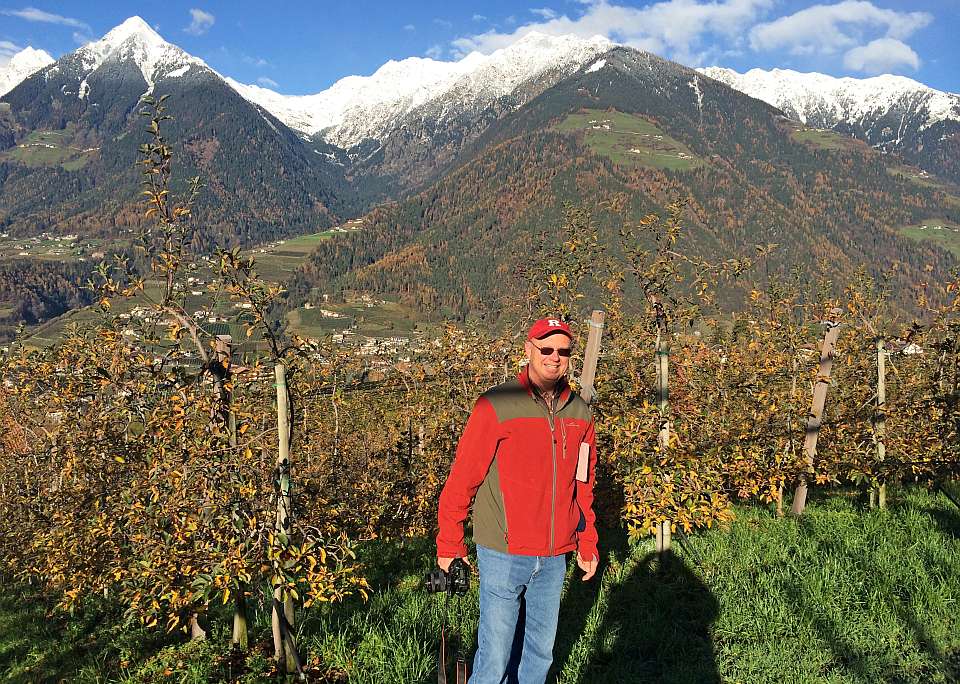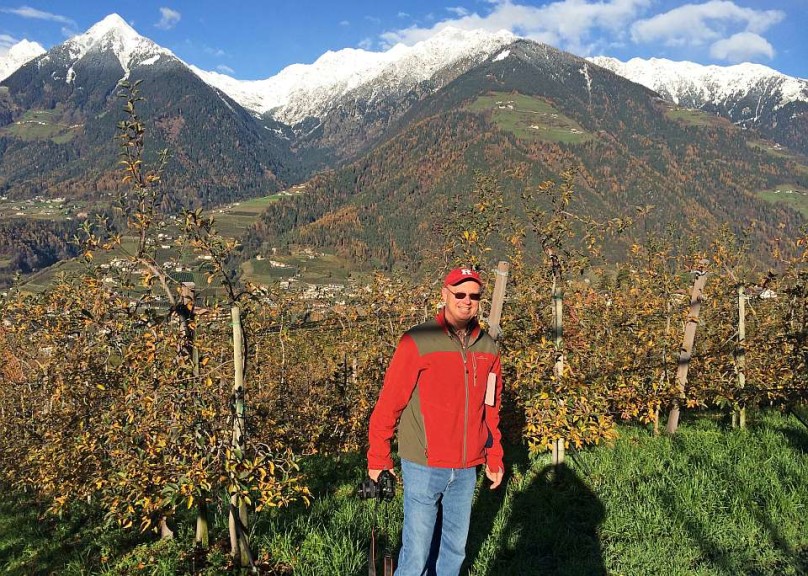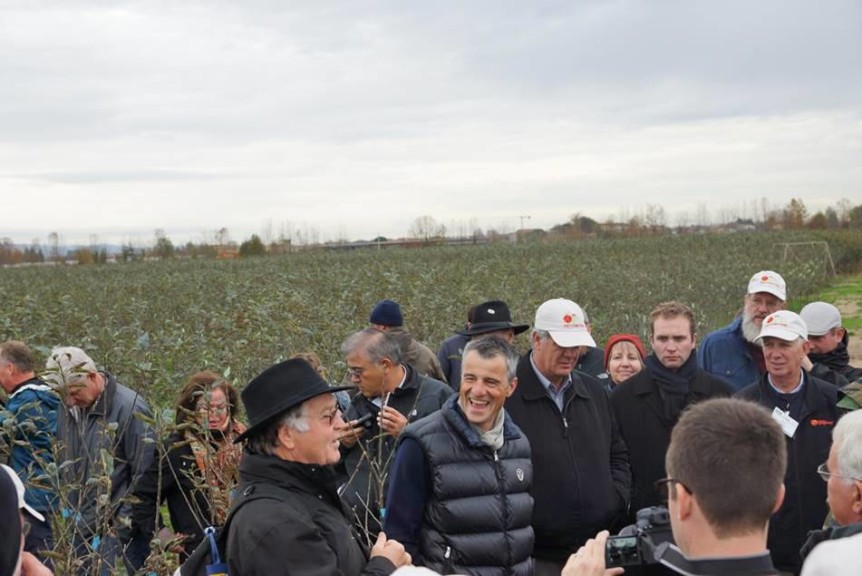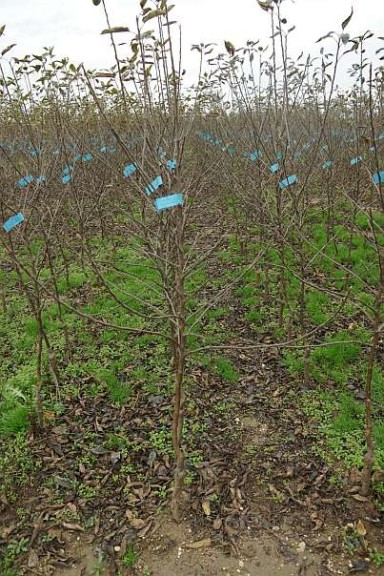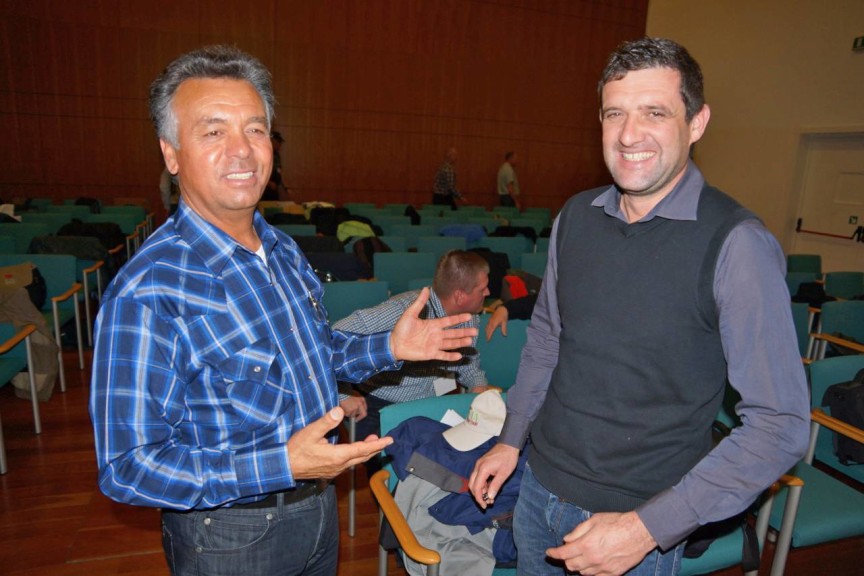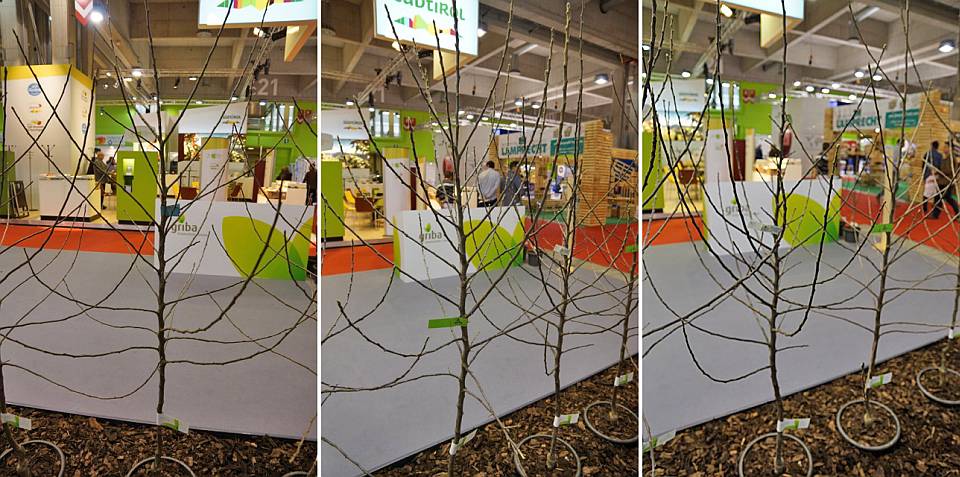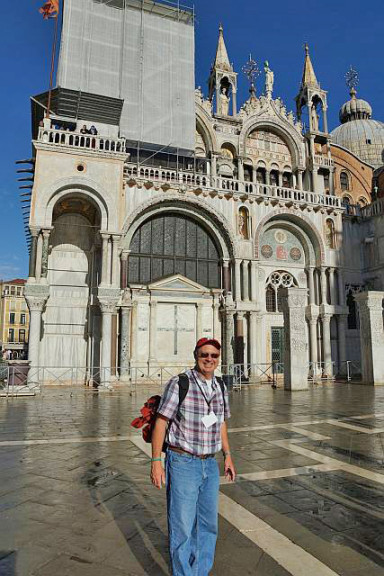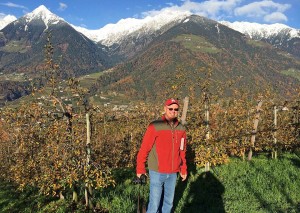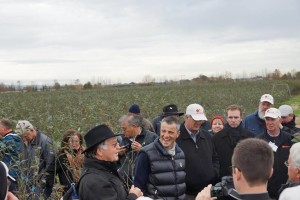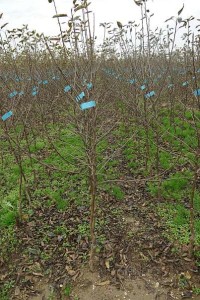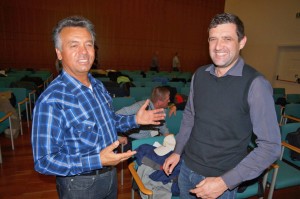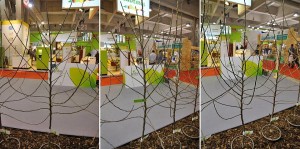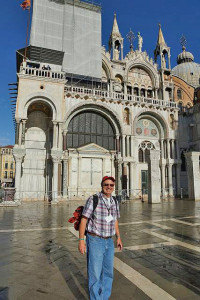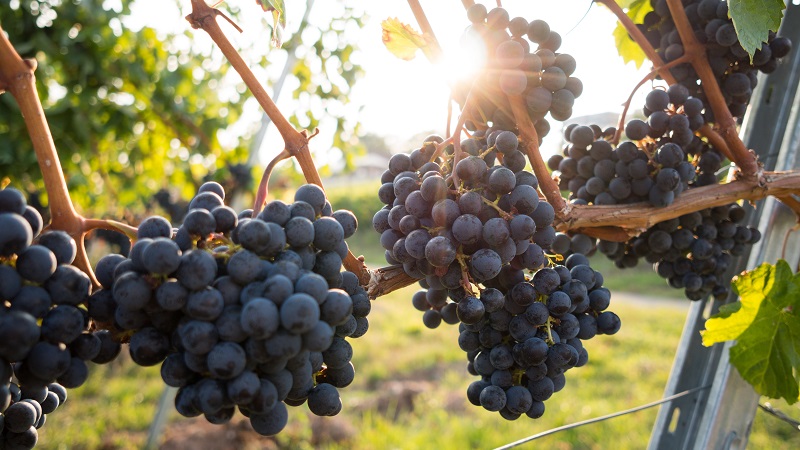On The Road With The International Fruit Tree Association Study Tour To Italy Part 2 [Slideshow]
[blackoutgallery id=”67215″]
If you missed Win’s first “On The Road” post, you can read it here.
Attention to detail is evident is the key to GRIBA’s outstanding tree quality. We spent two hours learning the ins and outs of their system from Director Gunther Mahlknecht. Of course in just two hours it is only an overview, but nevertheless here are some highlights.
Overview of GRIBA:
- Cultivar Golden Delicious Klon B Lb
- Rootstock M.9337 (for 95% of their production, no Geneva rootstocks, farmers demand M.9)
- 1-year-old trees in the nursery (not knip boom trees)
- Blue label indicates trees are certified virus-free.
- Rootstocks are bench-grafted in February and planted March. If you look closely you can see the approximately 2-inch piece of bench graft at the top of the rootstock.
- Stock is planted approximately 3-feet-by-1-foot in the nursery (closer spacing than in the U.S.).
- Herbicides are applied every 15-20 days with shielded booms; first application has pendimethalin plus a post emergent herbicide, subsequent applications were post emergent herbicides only.
- Fireblight is strictly controlled, if found in the nursery the entire crop is required to be destroyed.
- 200 units of nitrogen per hectare (2.47 acres per hectare) are applied in applications split every two days.
- 50% of apple nursery production is produced as 2-year-old knip trees, and 50% 1-year-old trees.
GRIBA Apple Nursery Production Techniques
- Pest control is done weekly
- Nursery purchases hail insurance
- Trees are defoliated utilizing copper and sulfur combinations and Copper EDTA
- Crop rotation is an issue, because there is no fumigation in Italy. Trees must therefore always be grown on virgin ground, therefore new locations are on rented land.
Nursery Tree Quality
- European orchardists have demanded higher quality trees for 20 years, much longer than their U.S. counterparts. GRIBA Nursery is no different, focusing on the production of high quality trees.
- Uniform standards for nursery tree quality are in place.
- The goal is the grade of first quality 7+ Extra. This grade equals a 1-year-old tree, less than 18-millimeter trunk size with seven feathers over 30 centimeters in length plus additional feathers, or a 2-year-old knip tree greater than 20 millimeters with seven feathers over 30 centimeters in length plus additional feathers.
- These trees all appeared to be well over 6 feet tall in the nursery — we were looking at 1-year-old trees not 2-year-old knip boom trees.
How Do They Get Those Feathered Trees?
- The secret is to make multiple applications of 6-BA (6-benzyladenine) to the growing tips in the nursery throughout the growing season. First application is at 60 centimeters, the standard height for first feathers.
- Subsequent applications are made throughout the growing season (years 3-5) to produce the highly feathered trees
Note: We have been working with Maxcel (6-BA) and Promalin (6BA +GA4A7) in the U.S. for the past four years in the nursery industry to branch trees and figure out their use. In 2013, a branching label was obtained on the Maxcel label; it already existed on the Promalin label in the U.S. for apple and cherry tree branching.
See the Summer 2014 issue of Horticultural News, Vol 94, No 3, Studies and Recommendations for Branching Young Apple Trees, by Cowgill, Autio, and Robinson, for more information on the use of Maxcel and Promalin in the U.S. for branching, or Fruit Notes, Summer Issue 2014, Vol 79, NO 3.





